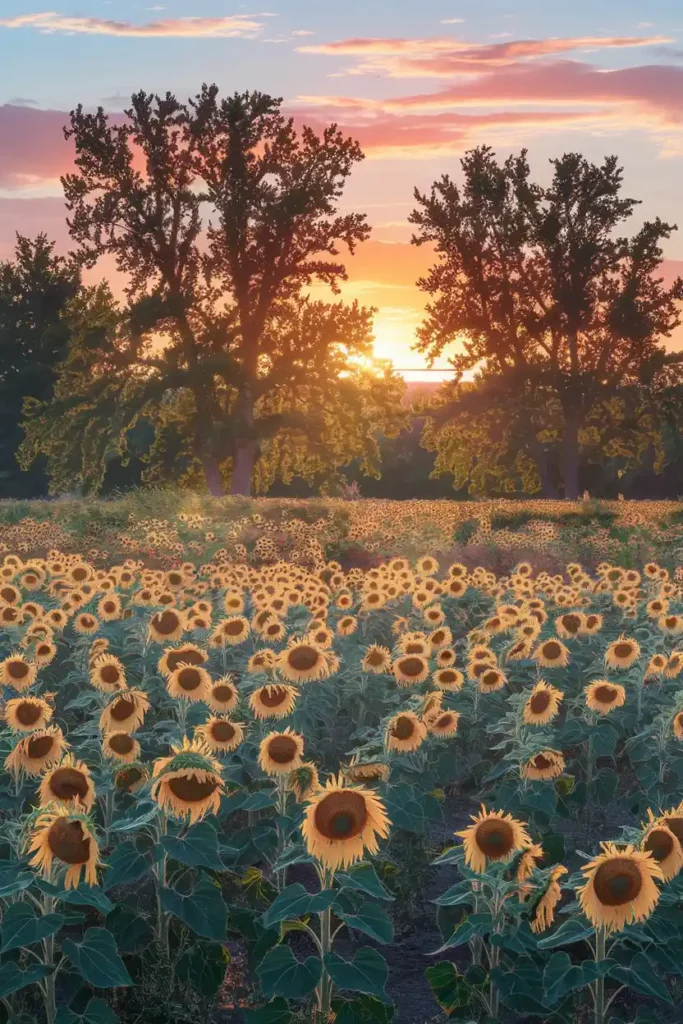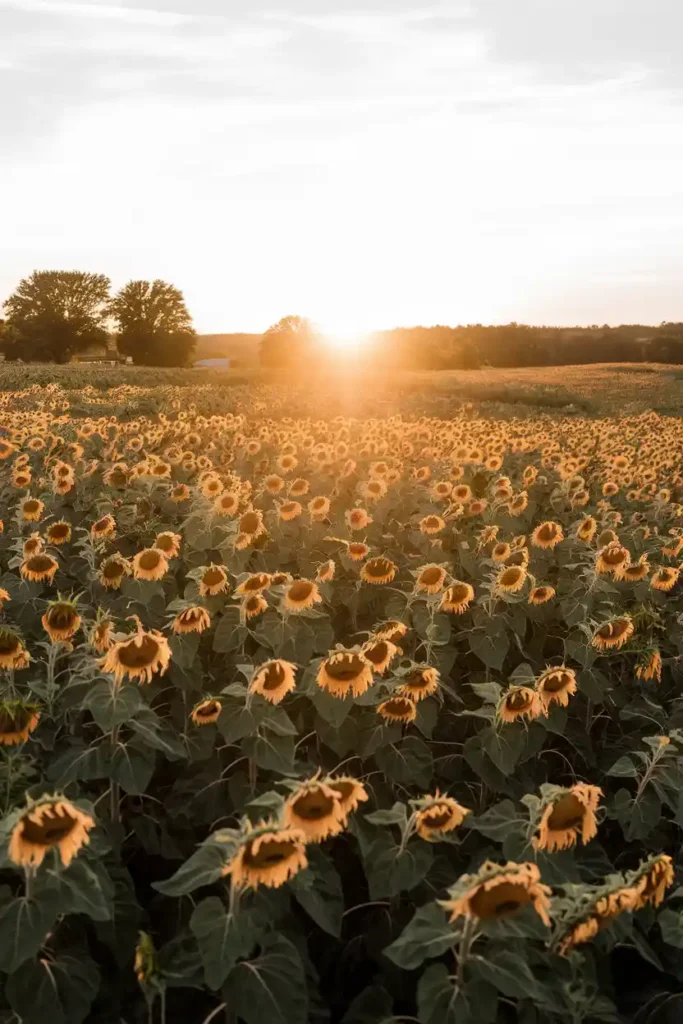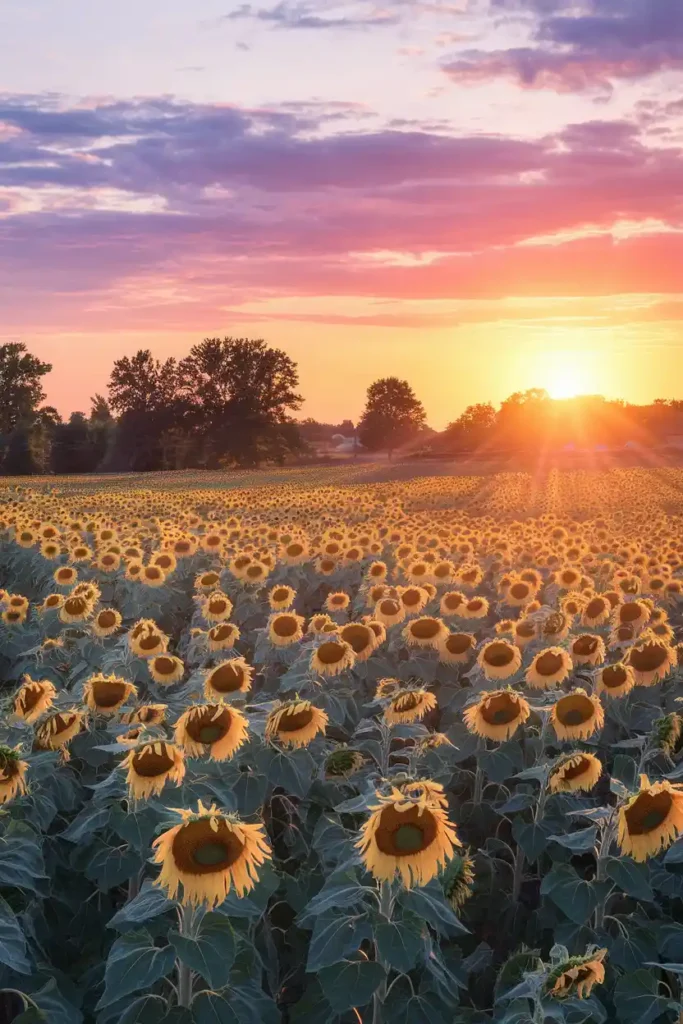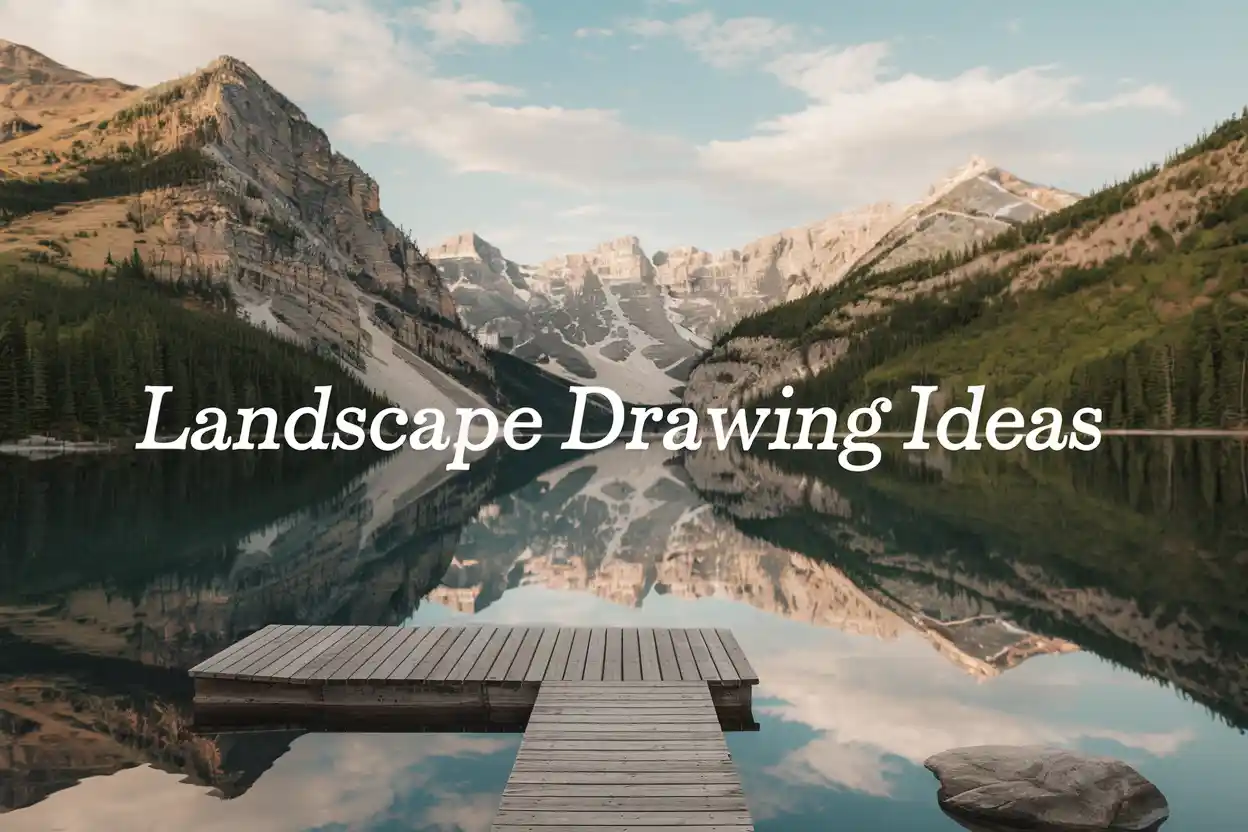Are you ready to breathe life into your sketchbook with stunning scenery? Drawing landscapes can be incredibly rewarding, offering endless possibilities—from serene mountain ranges to charming rural vistas. Have you ever wondered which landscapes would be perfect for sharpening your skills or perhaps creating a masterpiece? Whether you’re a beginner or an experienced artist, these 15 landscape drawing ideas are packed with creativity and step-by-step guidance to bring your artistic visions to life.
Fast-Track Your Drawing Ability!A pencil drawing course that specializes in taking beginners and teaching them how to draw in a realistic style. The course itself is online video, so you can access it from anywhere in the world...  |
1. Mountain Range at Sunset
Drawing a mountain range is perfect for those who love bold lines and striking silhouettes. A sunset scene adds a warm color palette and lets you explore shading techniques.
Suitable for: Artists of all levels who want to practice dramatic contrasts.
Description: A mountain range with the sun setting behind it, casting beautiful rays of light and long shadows over the peaks.
Steps:
- Sketch the basic outline of the mountain shapes.
- Add layers to create different peaks and valleys.
- Draw the sun near the horizon line.
- Shade the mountains—darker at the base and lighter towards the top.
- Use warm colors to add the sunset sky and reflect it on the mountains.
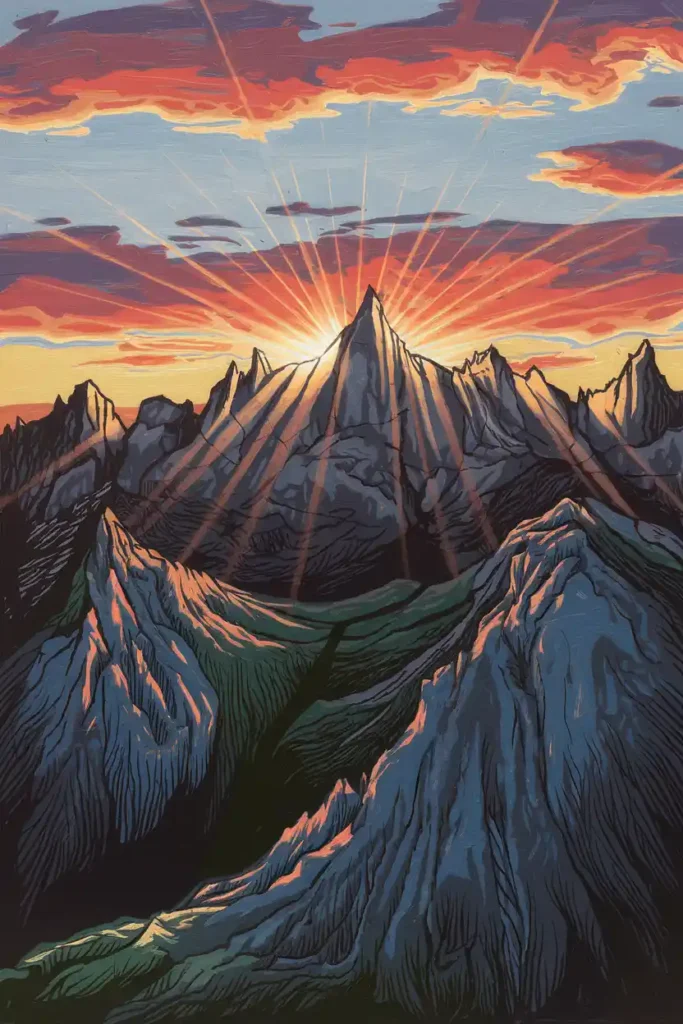

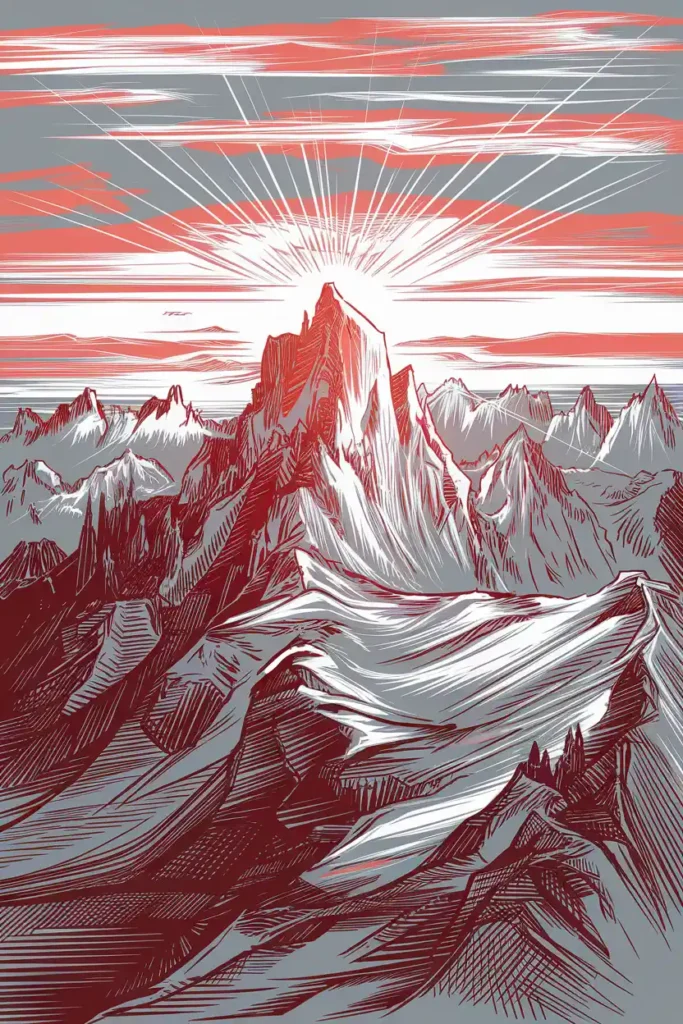
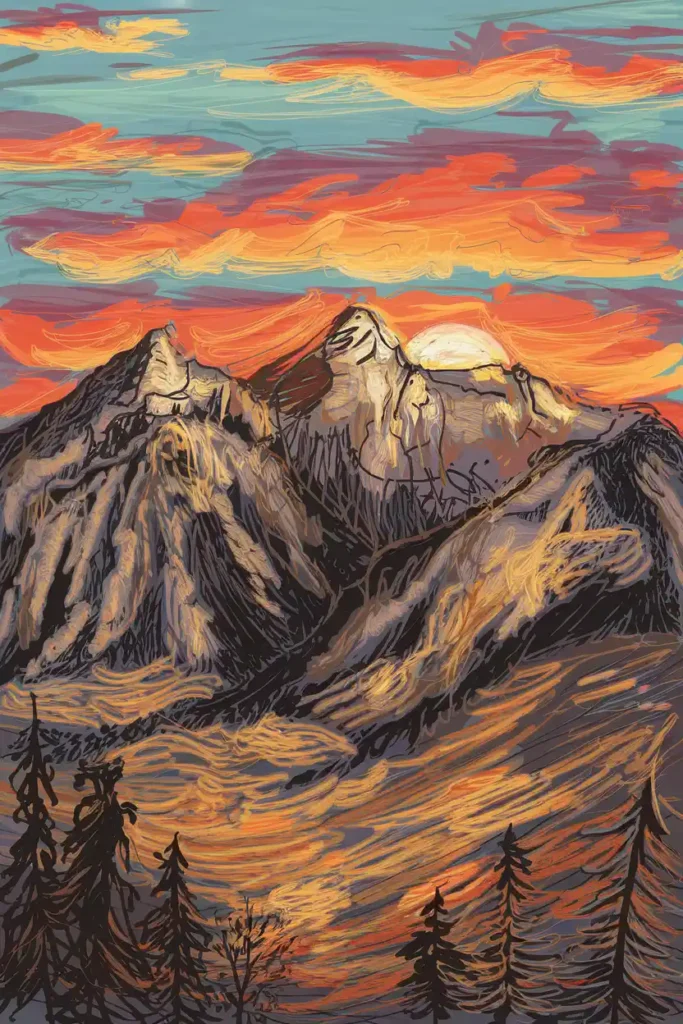
2. Serene Forest Path
A peaceful forest path can evoke feelings of calm and tranquility. It also gives you a chance to practice perspective by drawing a path that disappears into the distance.
Suitable for: Beginners looking to practice depth and perspective.
Description: A dirt path winding through a dense forest, lined with tall trees and scattered leaves.
Steps:
- Sketch the path narrowing toward the horizon to create depth.
- Draw the trees along both sides of the path.
- Add details like branches and leaves.
- Shade the trees, giving a sense of distance by varying darkness.
- Add light and shadow to show sunlight filtering through the trees.
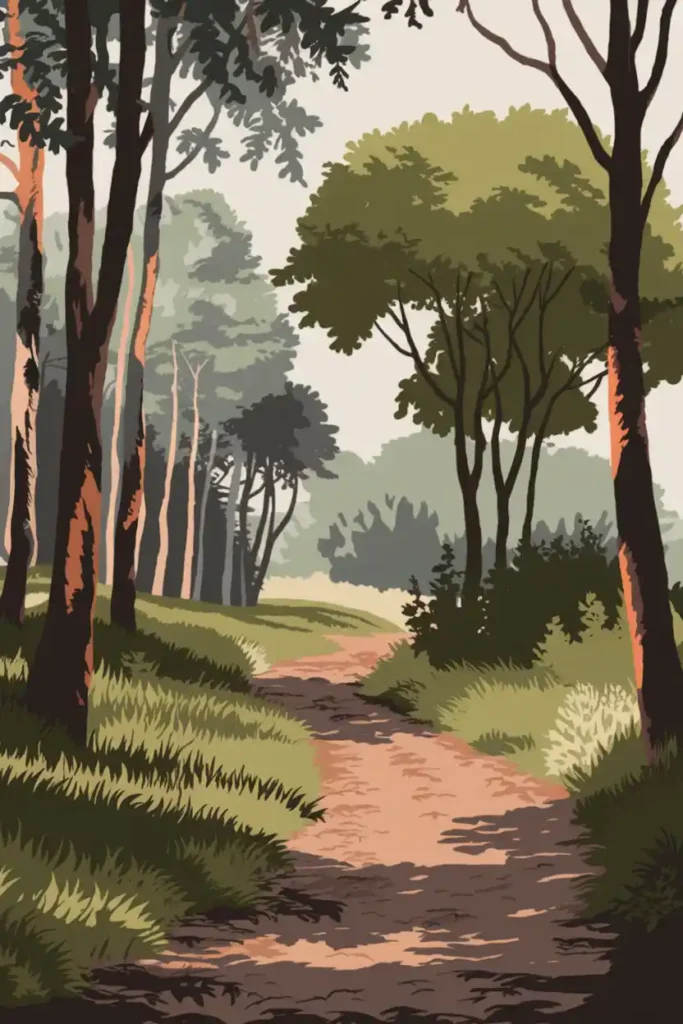
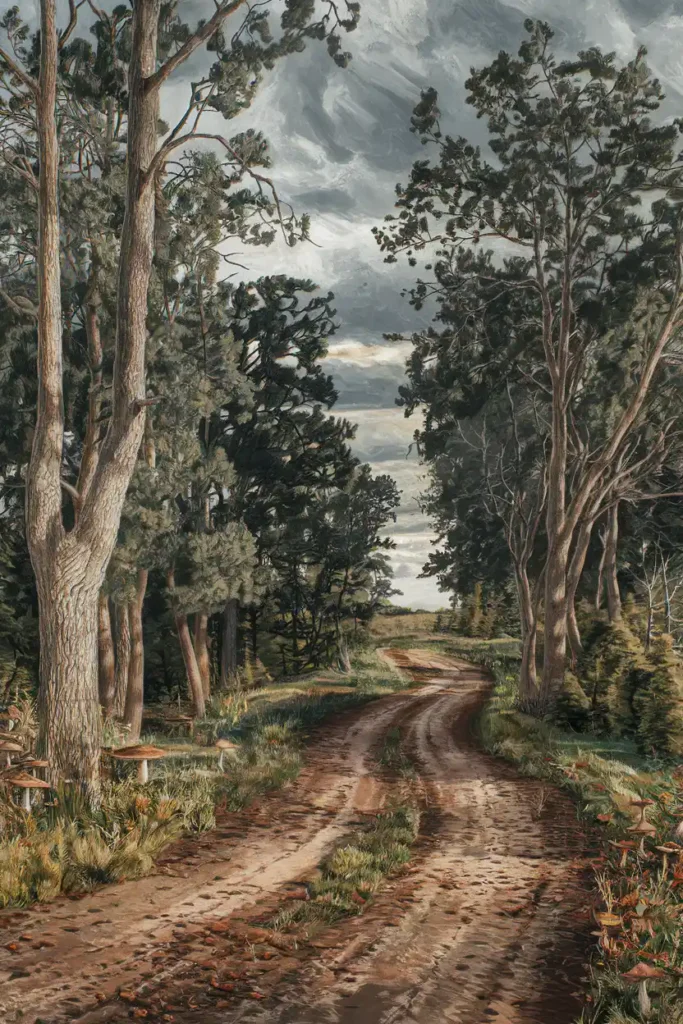
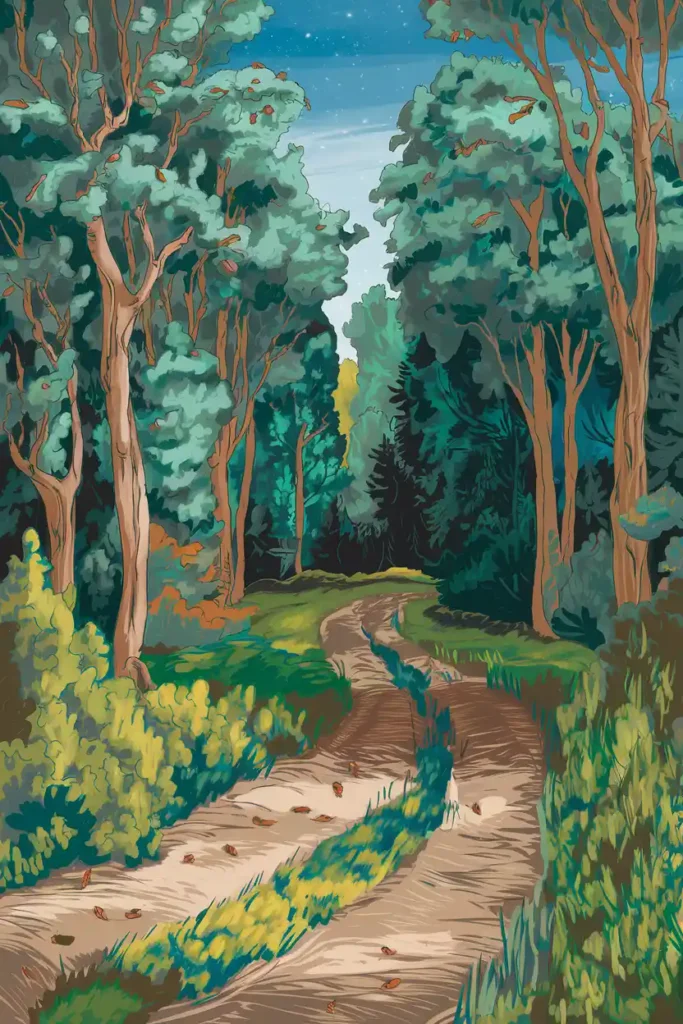
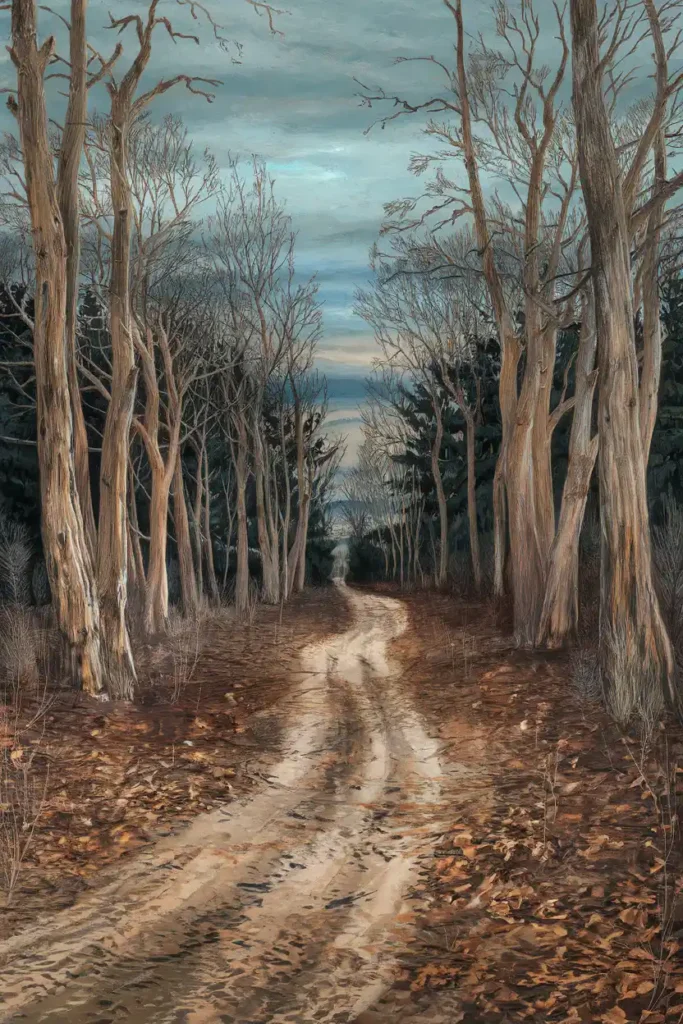
3. Rolling Hills with Wildflowers
Rolling hills are a fantastic subject to help you learn curved lines and blending techniques, especially when filled with wildflowers.
Suitable for: Artists who want to practice blending colors and drawing natural curves.
Description: Gently rolling hills covered in patches of colorful wildflowers under a bright blue sky.
Steps:
- Draw the curves of the hills across the page.
- Add clusters of small flowers on the hills.
- Sketch distant hills with lighter lines to show depth.
- Shade and blend to create the illusion of sunlight and shadows.
- Add a clear blue sky with a few fluffy clouds.

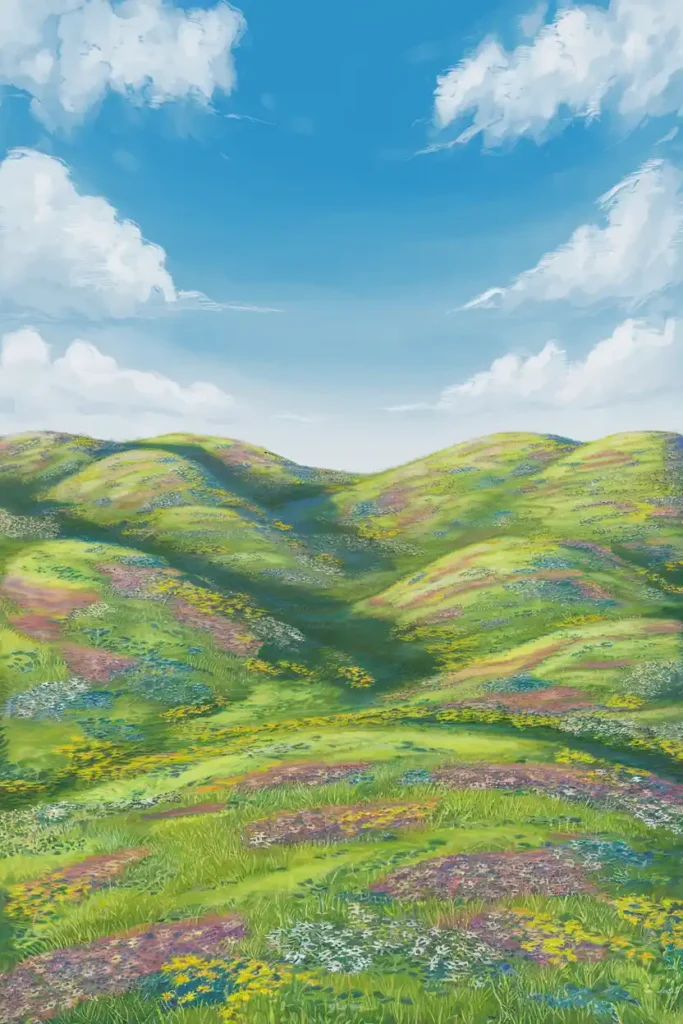


4. Coastal Cliffs
Dramatic coastal cliffs offer a chance to draw jagged edges and experiment with the texture of rock and water.
Suitable for: Intermediate artists interested in experimenting with texture.
Description: Cliffs rising above a crashing sea, with waves breaking at the rocky base.
Steps:
- Sketch the basic shape of the cliffs.
- Draw the sea with wave lines at the base of the cliffs.
- Add texture to the cliffs to create a rough, rocky appearance.
- Shade the water to depict depth and movement.
- Use white to highlight the foam from the waves.
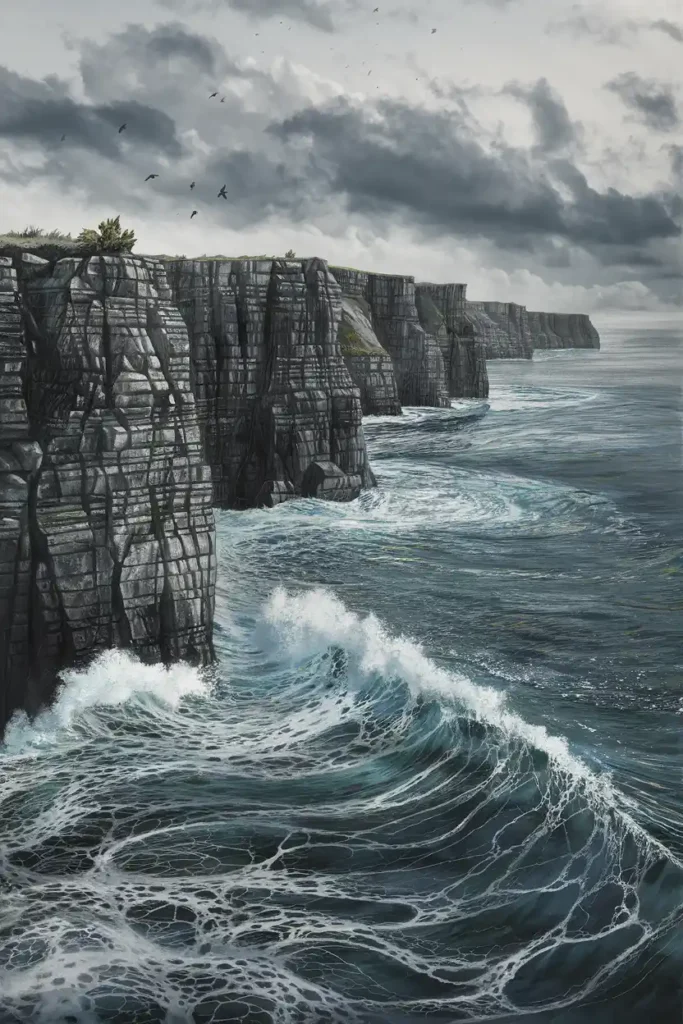
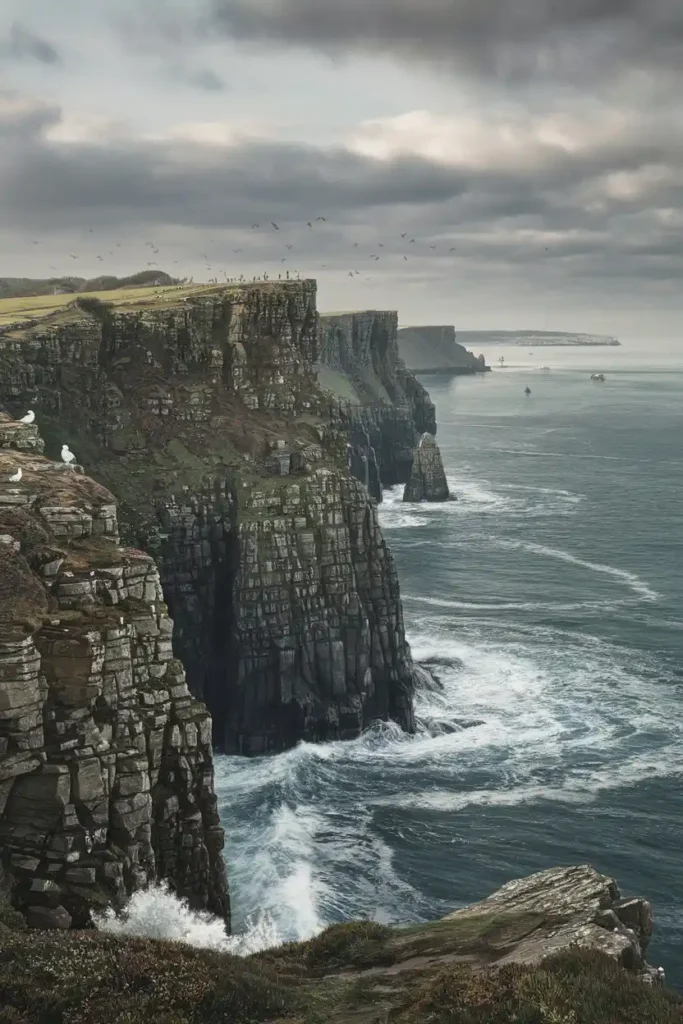

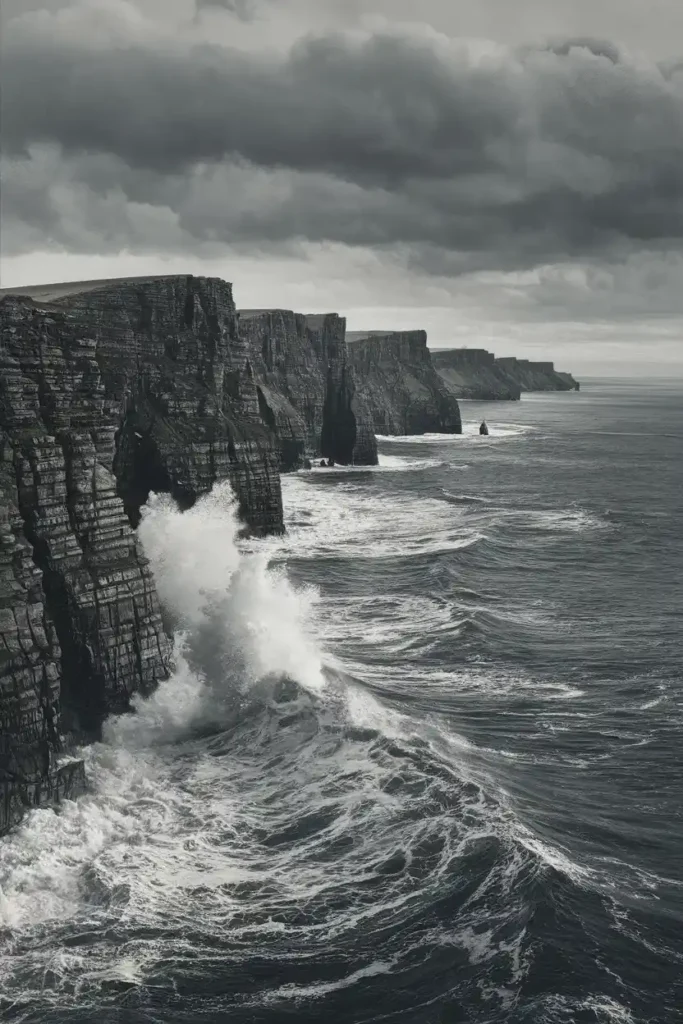
5. A Tranquil Lake with Reflections
Drawing a lake is perfect for practicing reflections. You’ll learn how to mirror elements like trees, mountains, or skies in the water.
Suitable for: Artists looking to master reflections and symmetry.
Description: A calm lake that reflects the sky and surrounding trees, with ripples adding realism.
Steps:
- Draw the horizon line and outline the lake.
- Sketch trees or mountains around the lake.
- Reflect these elements in the water by mirroring the shapes.
- Add ripples in the lake to make the reflection look natural.
- Shade accordingly to show depth in both the water and surrounding land.
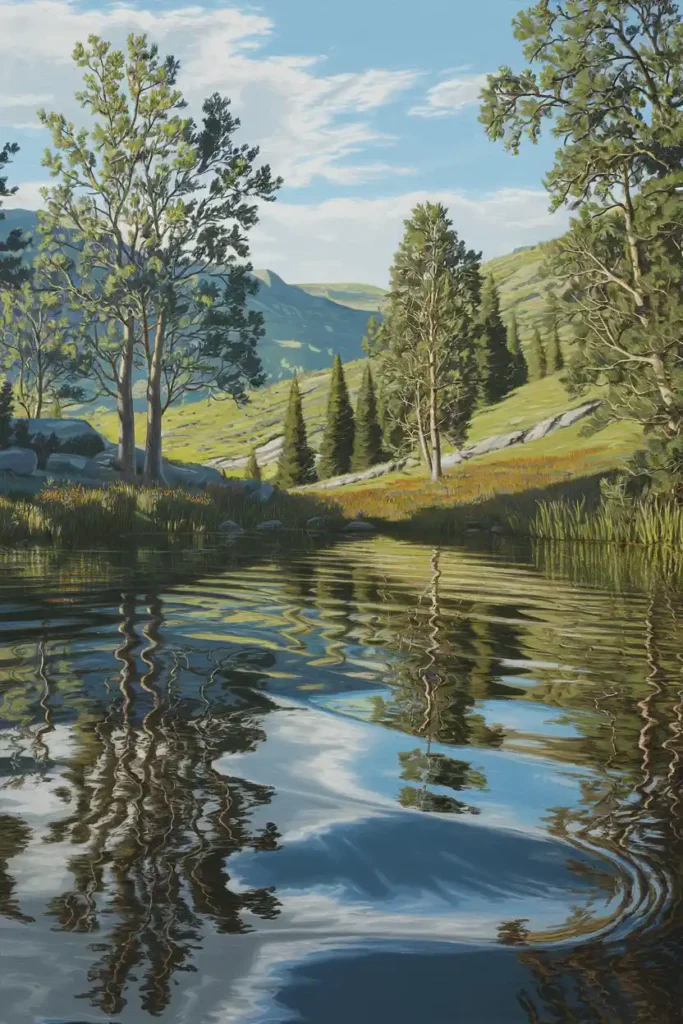

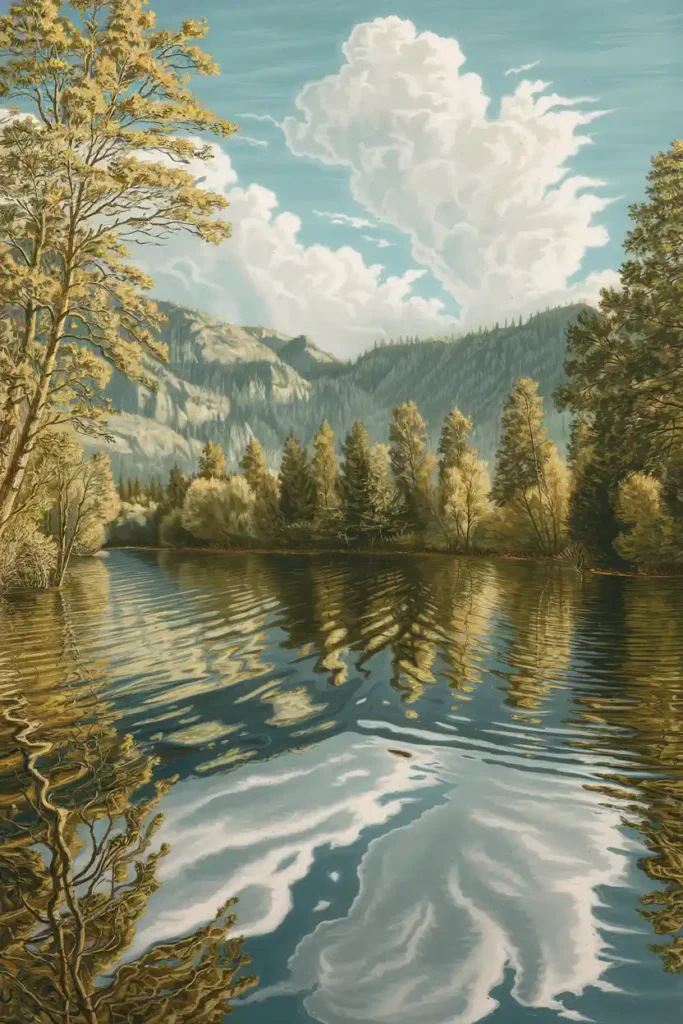

6. Snow-Capped Peaks
Snow-capped peaks are great for learning how to depict light and shadow. The snow offers a nice contrast with rocky surfaces.
Suitable for: Intermediate artists interested in contrasting light and dark.
Description: Majestic mountains topped with snow, under a crisp blue sky.
Steps:
- Draw the outline of the mountains.
- Add texture to indicate rocky surfaces.
- Sketch areas where the snow collects.
- Shade to indicate where the light hits and where shadows form.
- Add the sky and details like distant clouds.
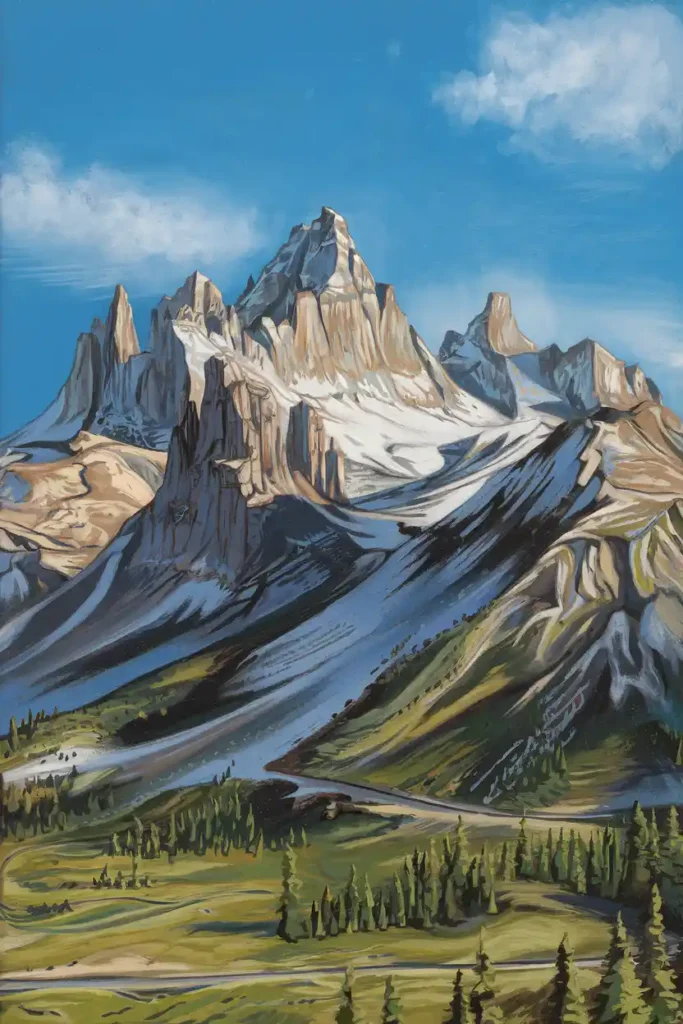


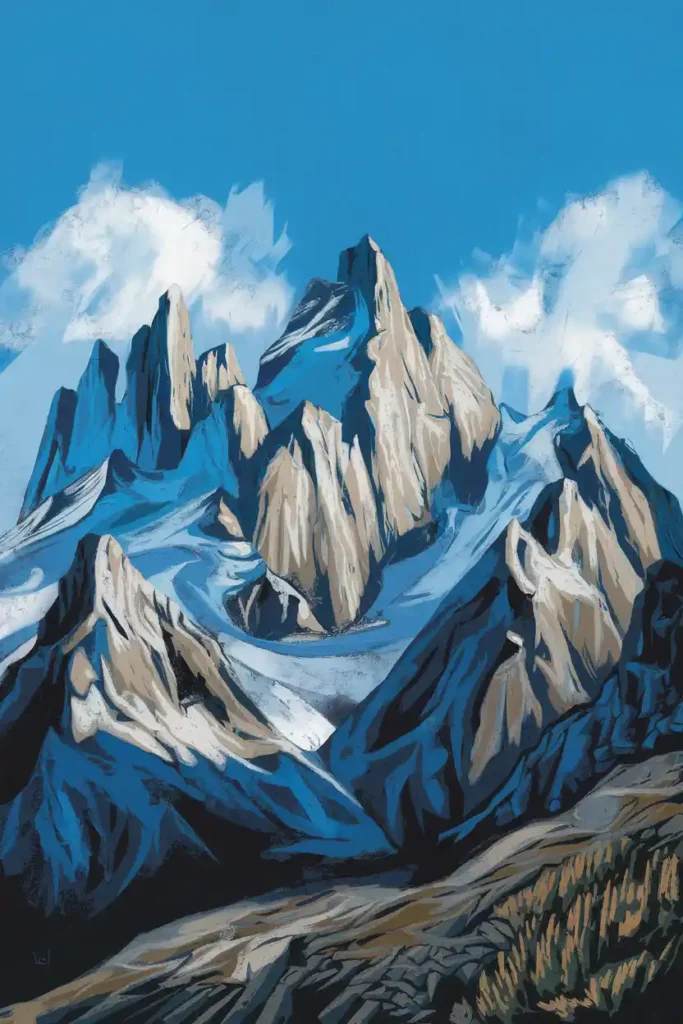
7. Desert Dunes
Desert landscapes are ideal for practicing smooth gradients and curved lines. The sand dunes offer unique patterns created by the wind.
Suitable for: Artists who enjoy drawing smooth lines and gradients.
Description: Rolling sand dunes with gentle shadows and a clear sky above.
Steps:
- Sketch the curves of the dunes.
- Add ridges to the dunes to show their structure.
- Use smooth shading to show the play of light on the sand.
- Add shadows to give depth.
- Draw a bright, simple sky to contrast with the dunes.
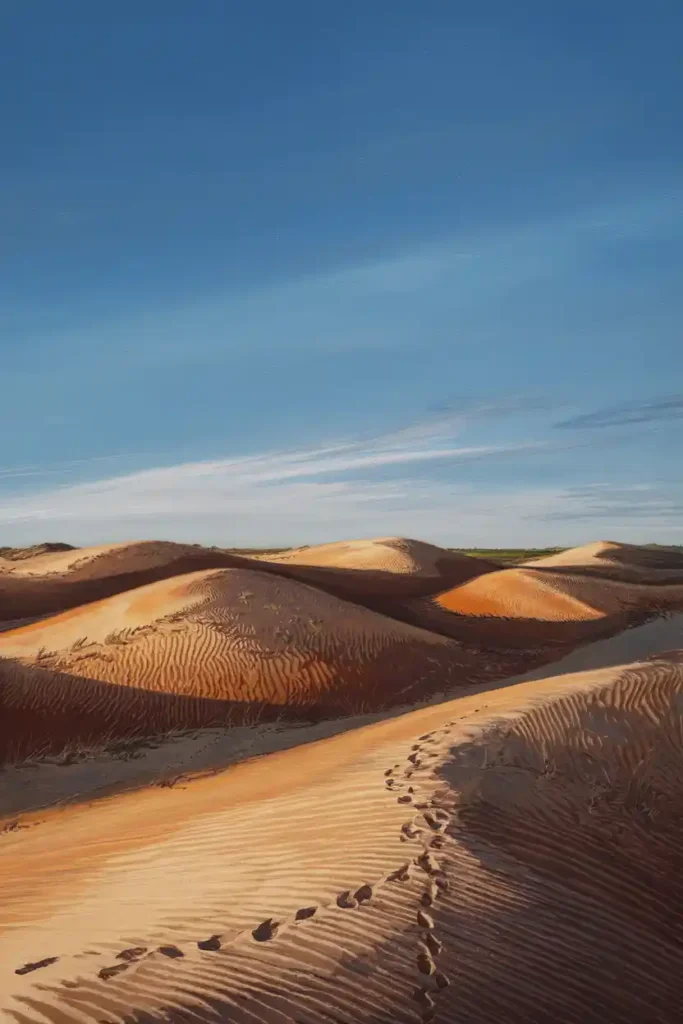

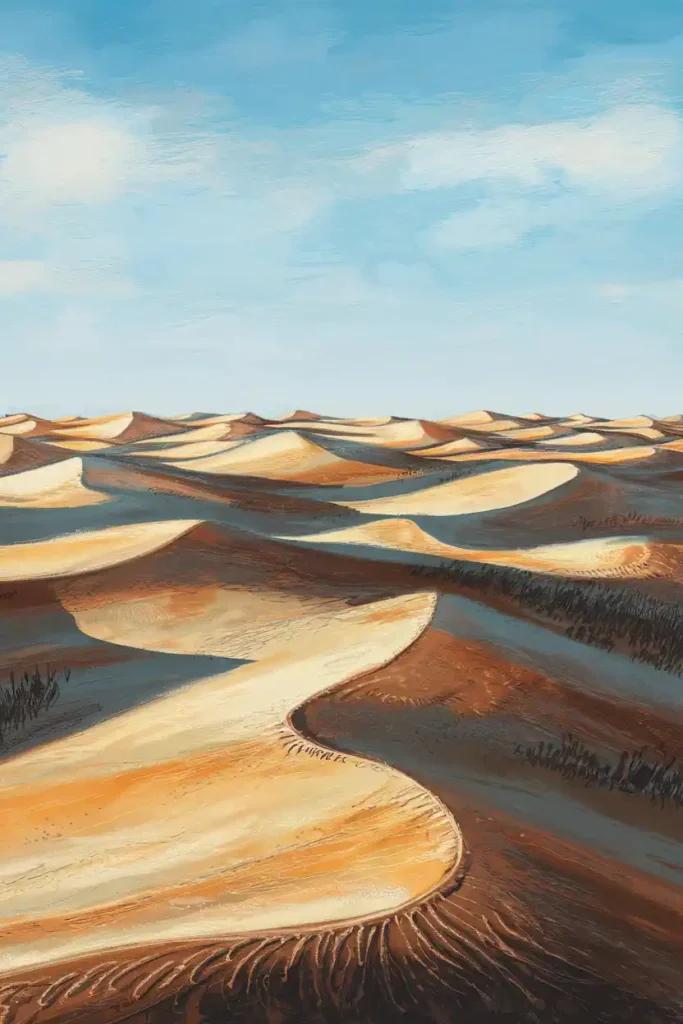
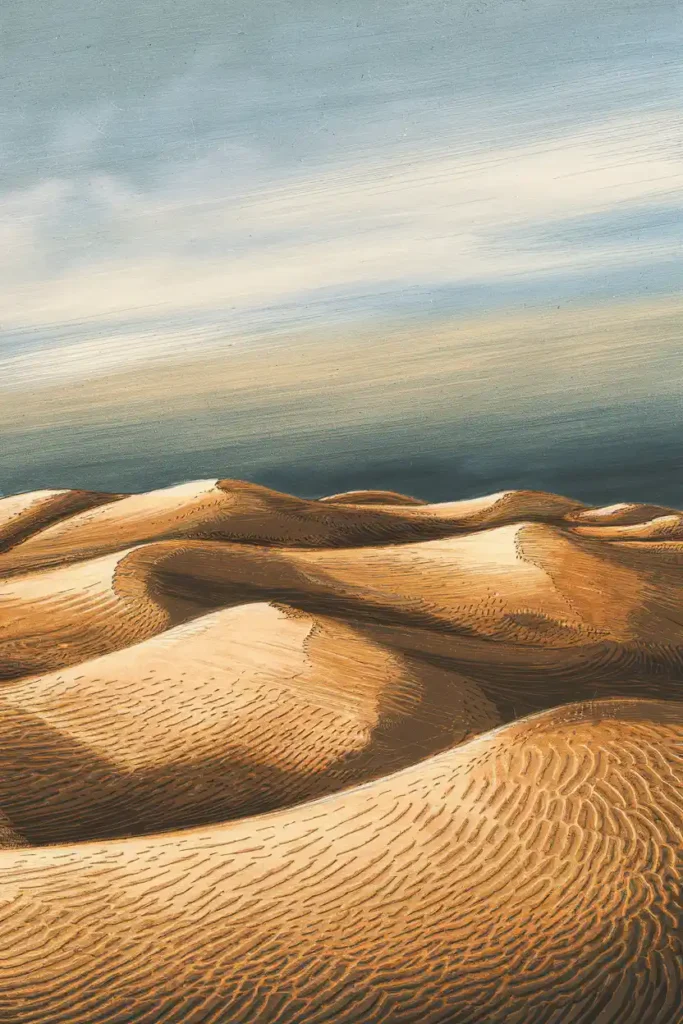
8. Countryside Windmill
A windmill in a wide-open field is a charming subject that allows you to practice drawing structures and natural elements together.
Suitable for: Beginners wanting to practice both architectural elements and nature.
Description: A traditional windmill surrounded by fields of grass and flowers.
Steps:
- Draw the windmill structure with straight lines.
- Add the surrounding field with grasses and flowers.
- Sketch the rotating blades of the windmill.
- Add details like wooden panels and brickwork.
- Shade the windmill and field to add dimension.
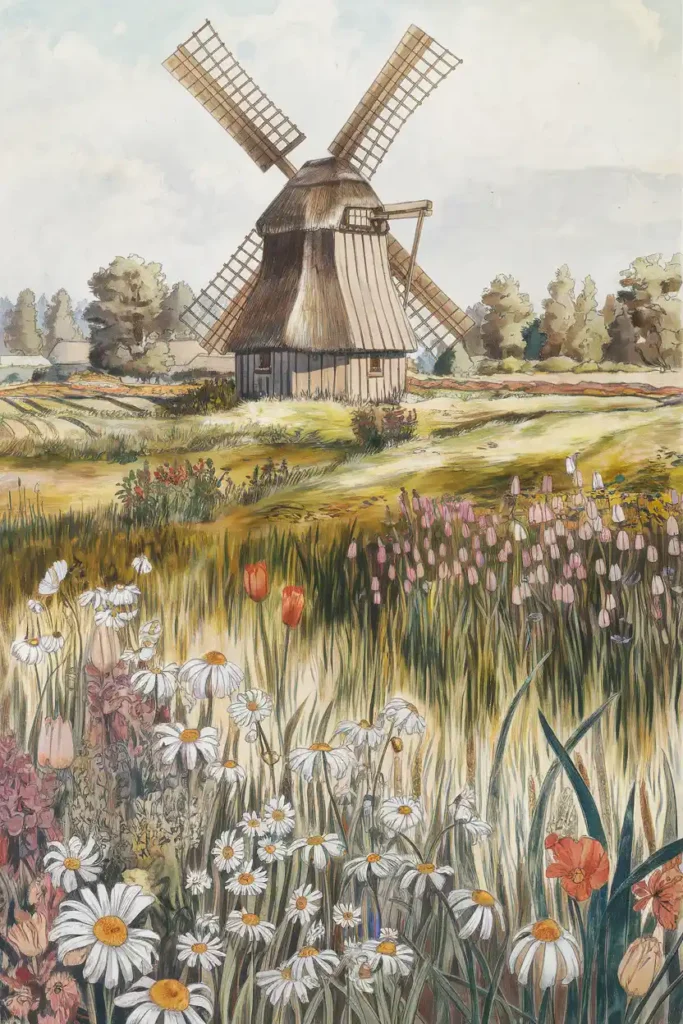
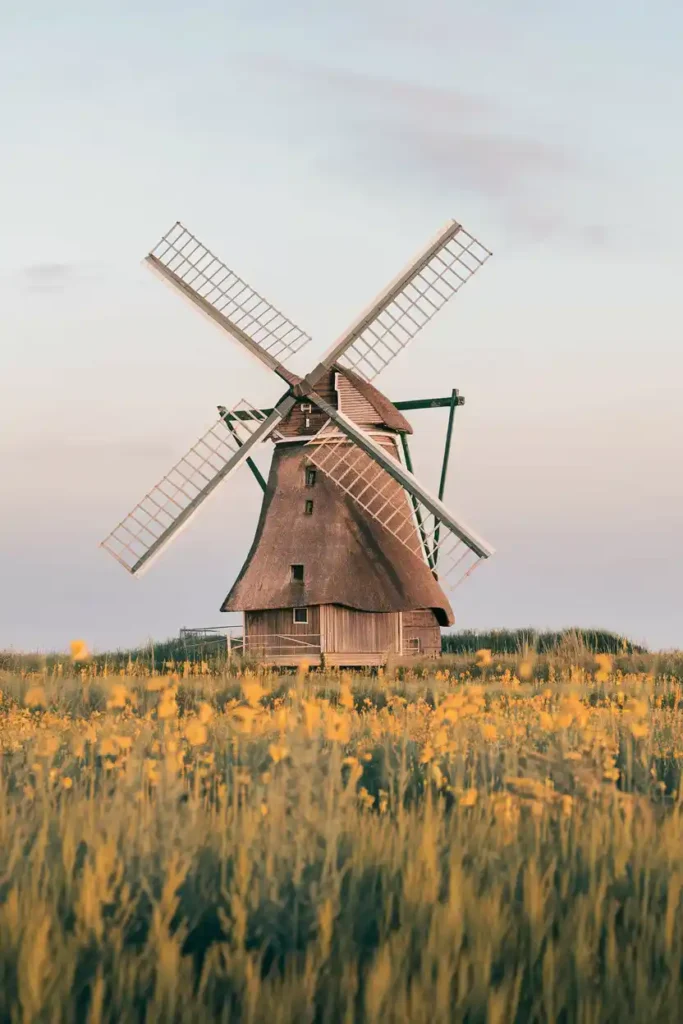
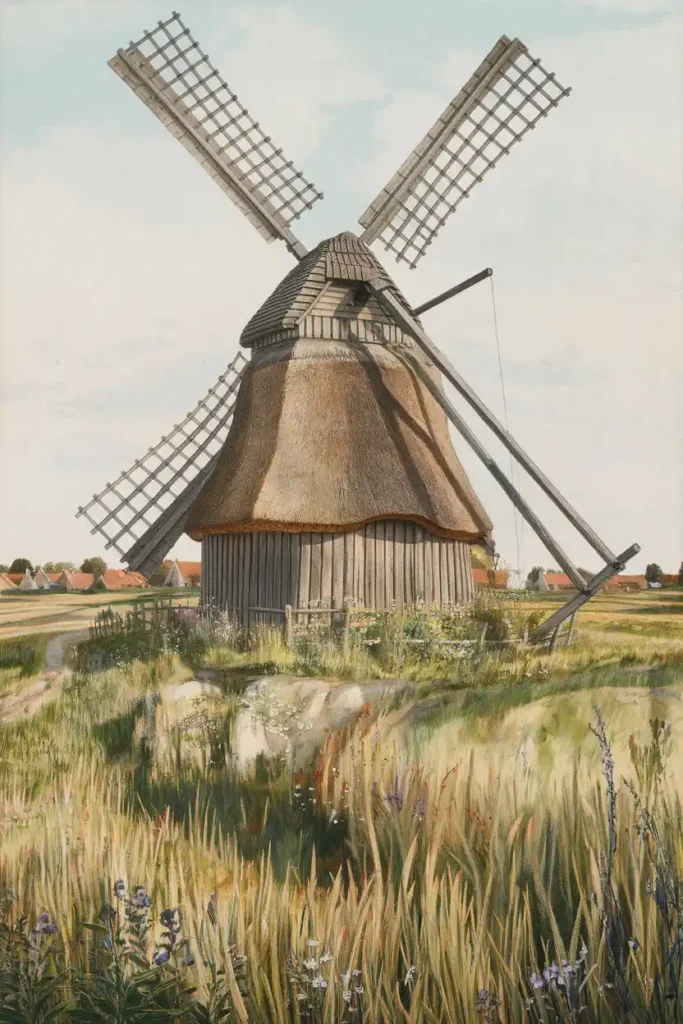

9. Cityscape Skyline at Dusk
Drawing a skyline lets you combine elements of nature with man-made structures. A dusk setting adds beautiful colors to experiment with.
Suitable for: Artists who enjoy urban themes and want to work on silhouettes.
Description: A city skyline with buildings silhouetted against a colorful dusk sky.
Steps:
- Sketch the outline of the buildings.
- Draw varying building heights for interest.
- Add details like windows and antennas.
- Fill in the buildings with dark shading to create silhouettes.
- Use warm colors for the sky, transitioning from bright to dark.

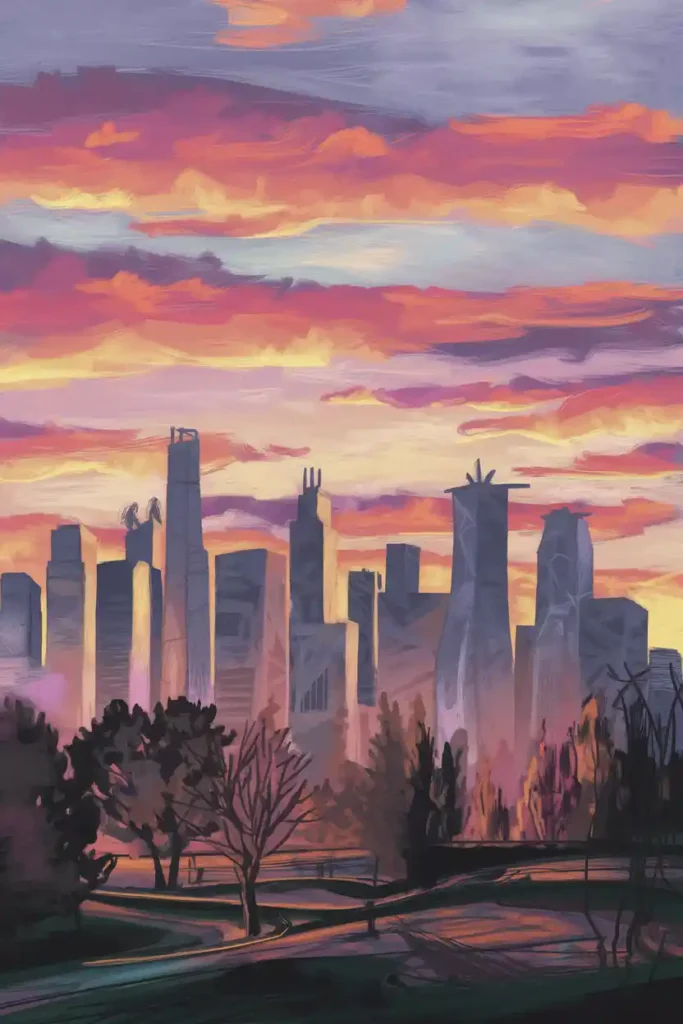


10. Meadow with a Rustic Barn
A barn in a meadow is a classic rural scene that gives you practice with perspective and textures like wood and grass.
Suitable for: Intermediate artists interested in drawing buildings in nature.
Description: A rustic barn with tall grass and flowers in the foreground.
Steps:
- Draw the outline of the barn, focusing on perspective.
- Add the roof and details like wooden planks.
- Sketch the meadow with grass and flowers.
- Shade the barn to give it an old, rustic look.
- Add light and shadow to the grass to create depth.
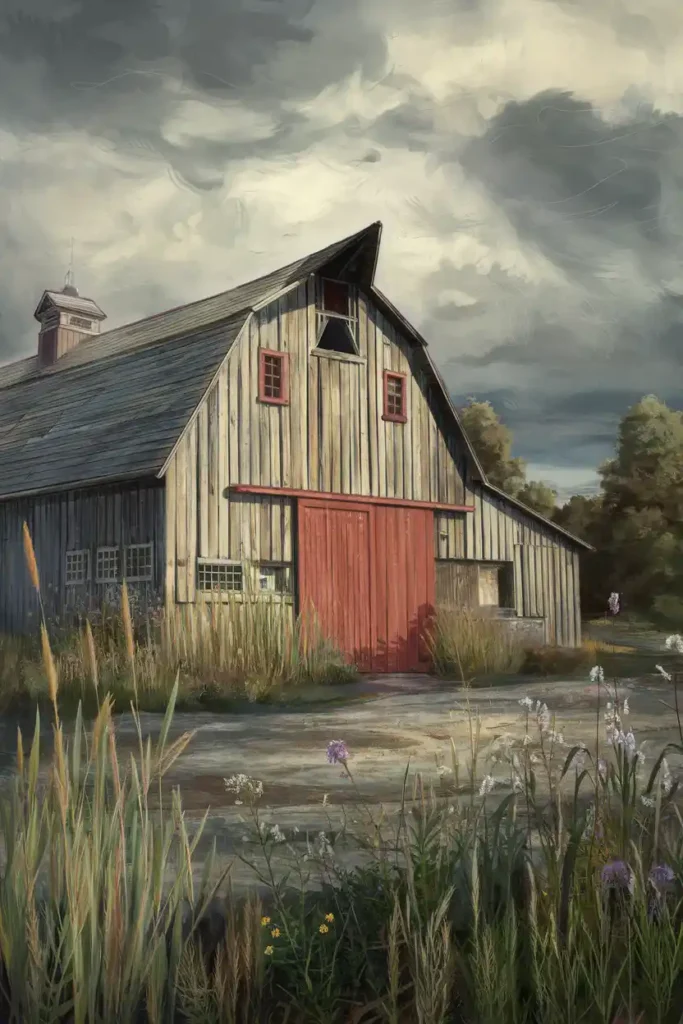

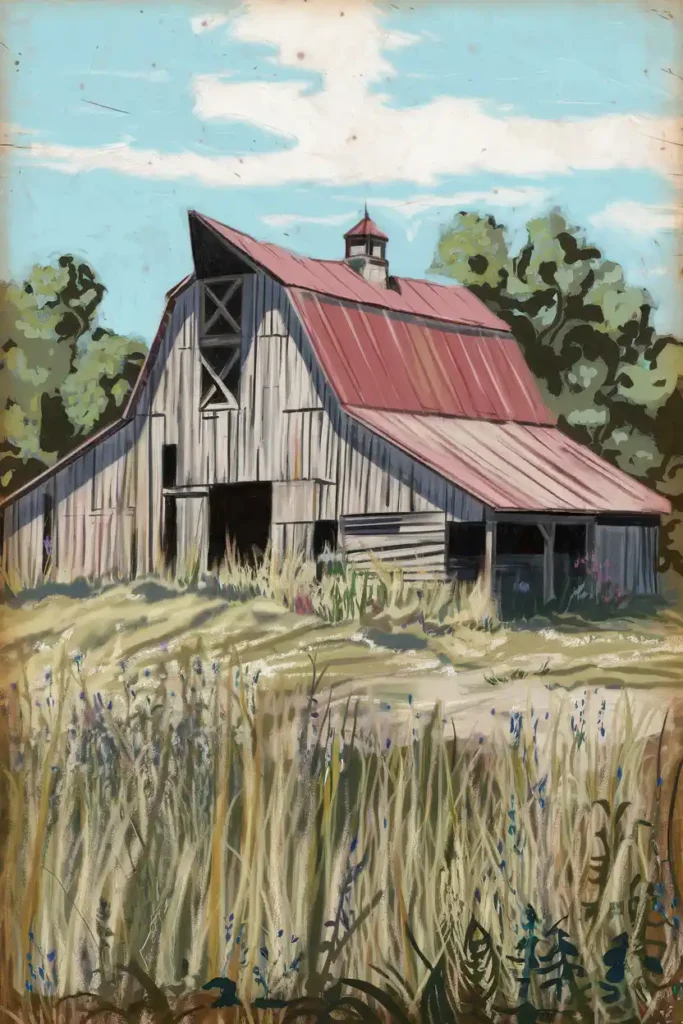
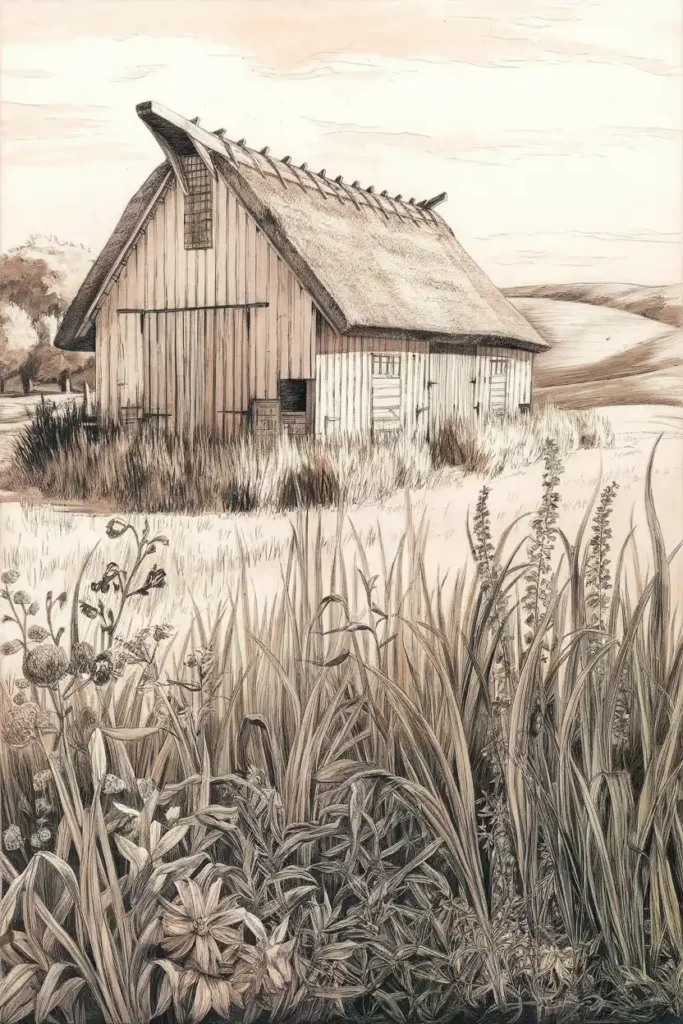
11. Autumn Forest with Falling Leaves
Drawing a forest in autumn is an excellent way to explore vibrant colors and the movement of falling leaves.
Suitable for: Artists wanting to experiment with colors and capturing movement.
Description: A forest filled with autumn colors, with leaves gently falling to the ground.
Steps:
- Sketch the trunks of the trees and their branches.
- Add clusters of leaves in varying shapes.
- Use shades of red, orange, and yellow for the foliage.
- Draw falling leaves to show movement.
- Shade the forest floor to create depth.


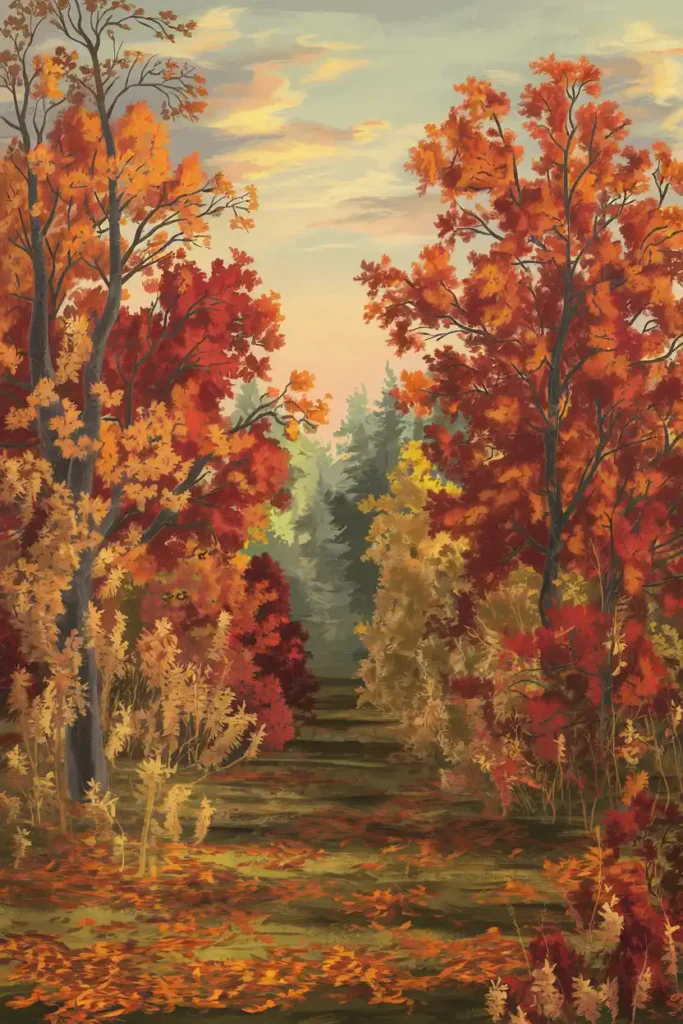
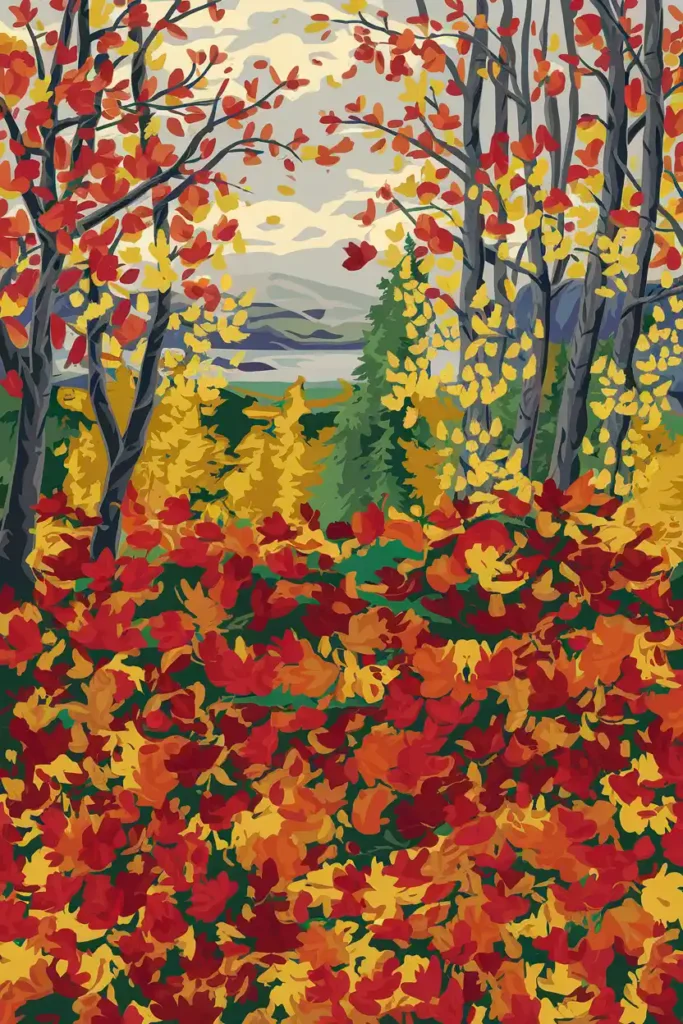
12. River Through a Canyon
A river winding through a canyon allows you to practice flowing water and rugged rock formations.
Suitable for: Intermediate artists who enjoy complex, natural landscapes.
Description: A narrow river snaking through tall canyon walls.
Steps:
- Draw the canyon walls with jagged lines.
- Add the river flowing through the center.
- Sketch layers on the canyon walls to add texture.
- Shade the water to show movement and reflections.
- Add shadows to give depth to the canyon.




13. Tropical Beach with Palm Trees
A tropical beach scene is great for learning about light, shadows, and reflections on water.
Suitable for: Beginners who want to capture the feel of a sunny, relaxed setting.
Description: A sandy beach with palm trees swaying in the breeze, waves gently lapping at the shore.
Steps:
- Sketch the horizon line and outline of the beach.
- Draw the palm trees with their distinct leaves.
- Add the ocean with gentle waves.
- Shade the palm trees to show sunlight and shadow.
- Draw details in the sand, like shells or footprints.
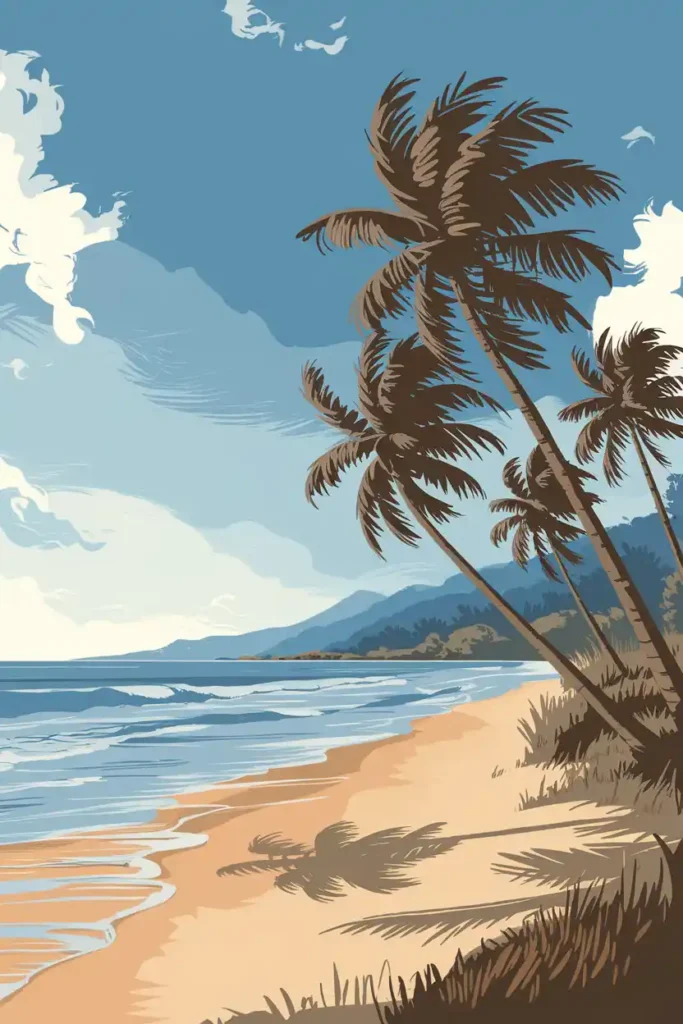



14. Foggy Forest in Early Morning
A foggy forest is an excellent choice to practice atmosphere and soft edges, perfect for capturing the mysterious beauty of nature.
Suitable for: Artists looking to create mood with subtle shading.
Description: Tall trees fading into a soft, misty background, with hints of light peeking through.
Steps:
- Sketch the outline of trees, focusing on varying heights.
- Use light shading to create a foggy effect.
- Add details to the foreground trees and let the background fade.
- Use an eraser to soften edges for a misty look.
- Add a few beams of light breaking through the fog.
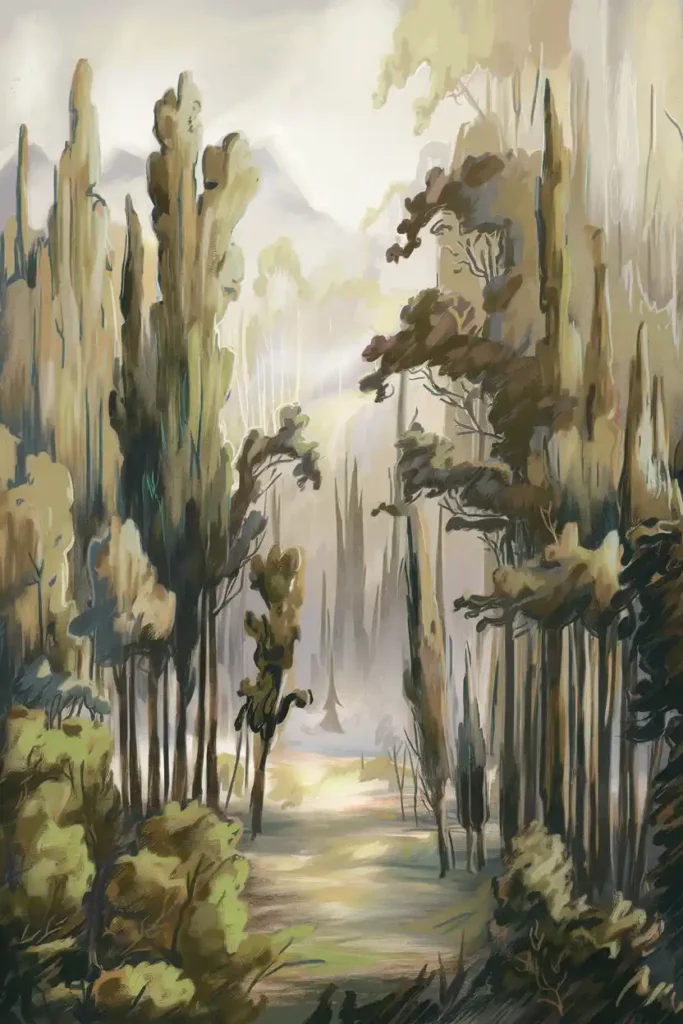
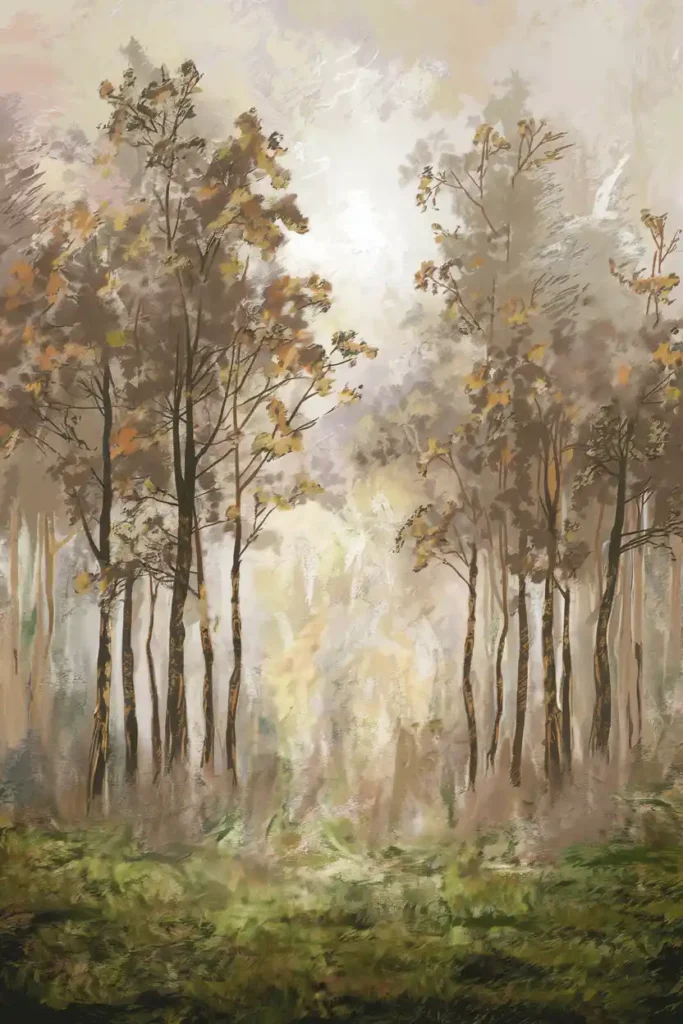

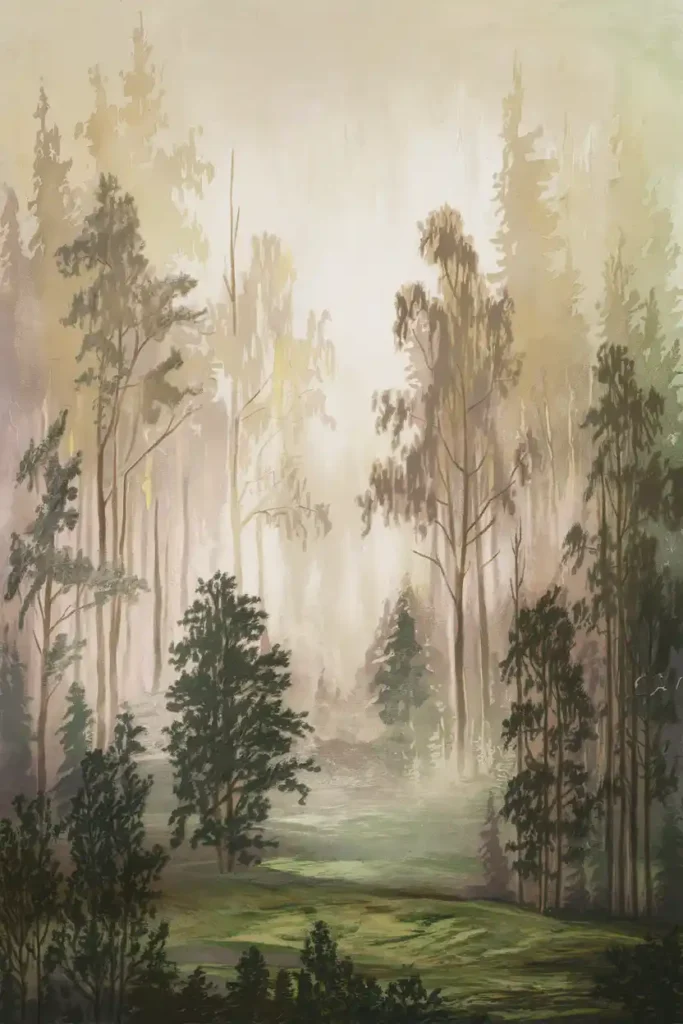
Can Ocean Scene Drawing Ideas be Adapted for Landscape Drawings?
Ocean scene drawing ideas can definitely be adapted for landscape drawings. The textures, colors, and composition found in ocean scenes can inspire beautiful and dynamic landscapes. From rocky coastlines to serene beaches, the elements of ocean scenes can bring a unique and captivating perspective to landscape drawings.
15. Sunflower Field at Golden Hour
A sunflower field captures the beauty of repetition and vibrant colors, giving you a chance to play with light and shadow.
Suitable for: Artists who want to work with bold colors and repetitive patterns.
Description: A wide field of sunflowers basking in the warm glow of the setting sun.
Steps:
- Draw the field horizon line.
- Sketch individual sunflowers, varying their sizes.
- Add stems and leaves to each sunflower.
- Use bright yellows and greens for the flowers and leaves.
- Shade the field to reflect the golden hour glow.
